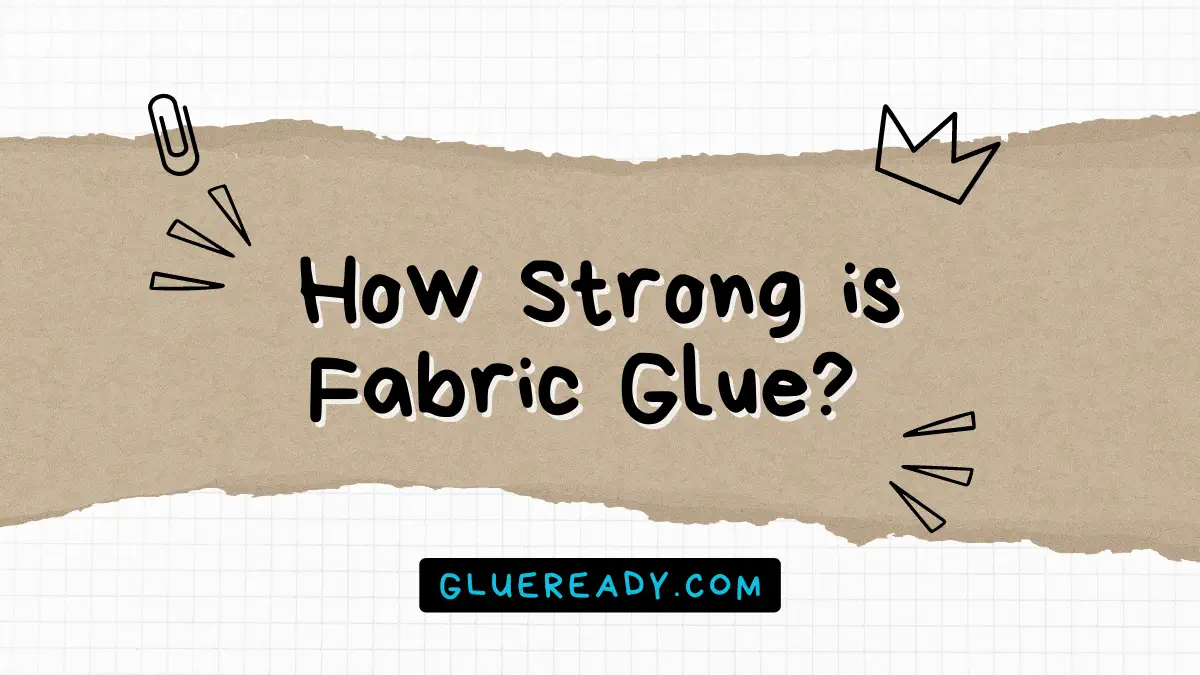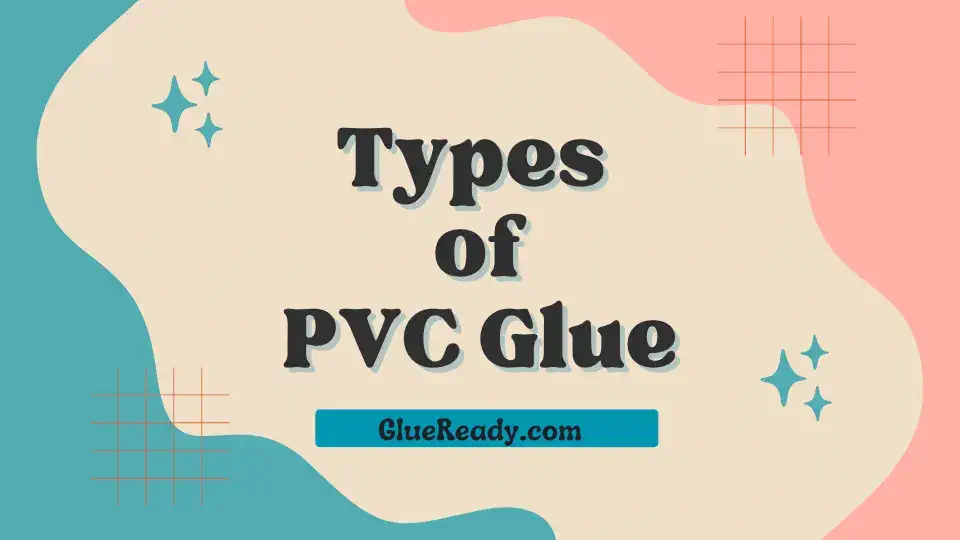How Strong Is Fabric Glue & How to Make It Last Longer?

Fabric glue is a convenient and versatile product that can help you with various sewing and crafting projects. It can bond fabrics together without the need for needles, threads, or sewing machines.
But how strong is fabric glue, and is there any way to make it last longer? In this article, I will answer these questions and give you some tips on how to use fabric glue effectively.
What Is Fabric Glue?
Fabric glue is an adhesive specially formulated for fabrics. It can be used to attach fabrics to each other or to other materials, such as buttons, beads, sequins, or patches.
Fabric glue can also be used to mend tears, fix hems, or create decorative effects on fabrics. There are several forms of it, including liquid, gel, spray, and stick.
Some fabric glues are temporary, meaning they can be washed off or dissolved in water. These are useful for basting or positioning fabrics before sewing.
Other fabric glues are permanent, meaning they create a strong and lasting bond that can withstand washing and wearing.
Read More: How To Use E6000 Glue on Fabric?
How Strong Is Fabric Glue?
The strength of fabric glue depends on several factors, such as:
The Type of Fabric Glue Used
There are many brands and varieties of fabric glue available in the market, and each one has its own characteristics and performance. Some fabric glues are stronger than others, depending on their ingredients and formulation.
For example, some fabric glues are latex-based, while others are acrylic-based or polyurethane-based. Each type of glue has its own advantages and disadvantages in terms of strength, flexibility, drying time, water resistance, and toxicity.
The Type of Fabric Being Glued
Different types of fabrics have different properties and textures that affect how well they bond with fabric glue.
For example, porous fabrics like cotton and wool tend to absorb more glue and create a stronger bond than non-porous fabrics like polyester and nylon. Also, thick fabrics like denim and leather require more glue and pressure than thin fabrics like silk and lace.
The Kind of Project Being Done
The strength of fabric glue also depends on the purpose and design of the project. For example, if you are using fabric glue to attach a patch or an embellishment to a garment, you may not need a very strong bond as long as it stays in place and looks good.
However, if you are using fabric glue to replace sewing on a seam or a hem, you may need a stronger bond that can withstand tension and movement.
The Conditions the Bond will be Subjected to
The strength of fabric glue also depends on external factors that may affect the bond over time.
For example, washing, drying, ironing, stretching, or rubbing the glued area may weaken or damage the bond. Also, exposure to heat, moisture, sunlight, or chemicals may affect the durability and appearance of the bond.
How To Use Fabric Glue Effectively?
To get the best results from using fabric glue, here are some tips to follow:
1. Choose the Right Type of Fabric Glue for Your Project
Read the label and instructions carefully to make sure the glue is compatible with your fabrics and materials. Also, check the expiration date and storage conditions of the glue to ensure its quality and safety.

2. Prepare Your Fabrics and Materials Before Gluing
Wash and dry your fabrics to remove any dirt, dust, oil, or stains that may interfere with the bonding process. Also, iron your fabrics to smooth out any wrinkles or creases that may affect the alignment and appearance of the glued area.
3. Apply the Fabric Glue According to The Directions
Follow the recommended amount, method, and tools for applying the glue. For example, some glues may require you to apply them on both surfaces, while others may only require you to apply them on one surface. Some glues may also require you to use a brush, a nozzle, or a spatula to spread them evenly and thinly.
4. Press and Hold the Fabrics Together Until the Glue Sets
Use enough pressure and time to ensure good contact between the glued surfaces. You can also use clamps, pins, weights, or tape to keep the fabrics in place while the glue dries.
5. Let the Glue Cure Completely
Before using or washing the glued area, let it dry completely. Depending on the type of glue and the thickness of the application, curing time may vary from a few minutes to several hours or days. Check the label for the recommended curing time and conditions.
6. Avoid Washing or Ironing the Glued Area Too Soon After Curing
Washing or ironing may weaken or damage the bond before it reaches its full strength and durability. Wait at least 24 hours before washing or ironing the glued area.
How to Make Fabric Glue Last Longer?
Fabric glue is a useful product for many crafts and sewing projects, but it can also lose its effectiveness over time. Here are some tips to make fabric glue last longer:
1. Check the Expiration Date
Fabric glue can expire, so look for a best-before date or an expiration date on the label, and use it by that date.
2. Allow It to Cure Completely
Make sure your fabric glue is properly set and cured according to the instructions for that specific brand.
3. Select the Right Fabric Glue
Different types of fabric glue work better with different types of fabrics. For example, cotton, denim, silk, and other natural fabrics work best with latex glue, while glues such as Fabri-tac work best with synthetic fibers like polyester and nylon.
4. Clamp or Hold the Fabric Down While Curing
Holding the fabric in place as the glue sets and cures is essential when gluing fabric. You can use clamps, pins, weights, or tape to keep the fabric from moving.
5. Apply Thin Coats
Applying too much glue can make the fabric stiff and bulky and reduce the bond strength. Apply thin coats of glue and spread them evenly over the surface of the fabric.
6. Avoid Washing It
If you want your fabric glue to last a long time, avoid washing it frequently. Fabric glue can weaken when exposed to water, heat, and chemicals such as detergents. The fabric should be washed on a gentle cycle without using hot water.
7. Ensure the Fabric Is Free from Dirt and Residue
Before applying fabric glue, make sure the fabric is clean and dry. Any dirt, dust, oil, or residue can interfere with the adhesion of the glue and reduce its effectiveness.
Does Fabric Glue Show Through Fabric?
Fabric glue may show through the fabric if you apply too much glue, use the wrong type of glue, or use the wrong type of fabric.
To prevent fabric glue from showing through fabric, you should apply the glue evenly and thinly, use glue that is compatible with your fabric, and use a fabric that is thick enough, dark enough, or patterned enough to hide the glue well.
How Long Does Fabric Glue Take to Dry?
Depending on the glue type, fabric type, and environmental conditions, fabric glue may take a different time to dry. It usually takes around 24 hours for fabric glue to fully dry.
Final Thoughts
Fabric glue is a handy product that can help you with various sewing and crafting projects. However, its strength and durability depend on several factors, such as the type of glue, the type of fabric, the kind of project, and the conditions the bond will be subjected to.
Fabric glue offers a strong and reliable bonding solution for a wide range of fabric-related projects. While its strength may not match that of traditional sewing in heavy-duty applications, fabric glue is ideal for light to medium-duty tasks, offering durability and flexibility.
By understanding its capabilities and following proper application techniques, fabric glue can be a valuable tool in your crafting or fabric repair arsenal, providing quick, convenient, and lasting results.






